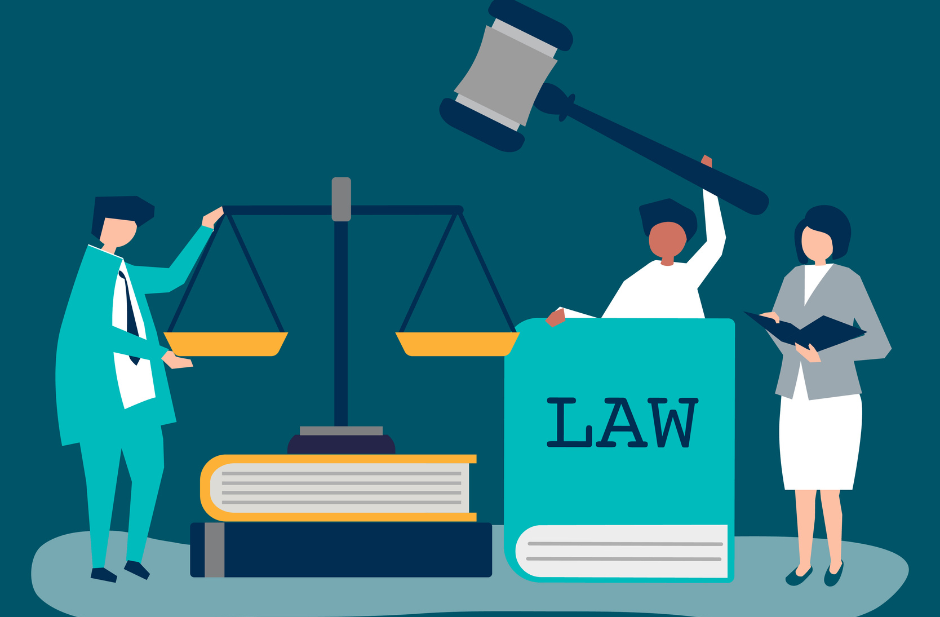Each year, around 25.5 million emergency department visits are made for unintentional injuries.
When another party’s negligence or recklessness causes injuries, the injured person may have a strong case to pursue compensation through a personal injury lawsuit. Several signs point to a higher likelihood of success in court.
But what are these about? What are the signs of a strong personal injury case?
If these are some of the things that you want to know about, then you have come to the right place. Therefore, keep on reading this blog till the end…
What Are The Signs Of A Strong Personal Injury Case?
Well, as I have already told you, there are several signs of a strong personal injury case that ensure you get the maximum compensation. So what are these?
Here are some of them that you need to know about:
1. Clear Liability
A key factor is being able to clearly show that the other party was at fault and acted negligently. This establishes a duty of care that was breached.
A trusted personal injury lawyer would suggest that some of the strongest liability scenarios include:
- Dangerous premises where known hazards existed, like wet floors without warning signs. The property owner failed to make the premises reasonably safe.
- Defective products that caused injury due to manufacturing flaws or inadequate safety features. This demonstrates that the manufacturer acted negligently.
- Motor vehicle crashes where the other driver clearly violated traffic laws and had a duty to drive safely. Police reports help establish liability.
- Medical malpractice where a doctor’s substandard treatment directly caused avoidable harm. Expert testimony proves negligence.
With clear liability, the law supports the injured person’s right to receive compensation.
2. Strong Evidence
Documenting the accident and injuries with evidence lays a solid foundation for the case. For instance, personal injury cases with dash cam footage have a 78% success rate compared to just 50% without video evidence.
Other examples of powerful evidence include:
- Photographs and video of unsafe property conditions before and after an accident.
- Security camera footage capturing events.
- Police reports and eyewitness statements.
- Medical records, bills, and test results substantiating injuries.
- Expert opinions from doctors, accident reconstructionists, and other professionals.
The more quality evidence available, the easier it is to prove liability and damages.
3. Significant Harm
While minor injuries like cuts and bruises may not be worth pursuing, serious injuries often warrant a lawsuit.
Studies show 42% of injury victims suffer chronic pain for over 5 years, impacting their ability to work and necessitating ongoing treatment.
Key types of harm include:
- Long-term disabilities like paralysis, brain damage, loss of limb function.
- Surgeries and hospitalizations.
- High medical bills.
- Lost wages from missing work.
- Loss of future earning capacity.
- Extended pain and suffering.
- Wrongful death of a loved one.
The greater the level of harm and losses, the higher potential damages become.
4. Liable Defendant
In two-thirds of malpractice claims against physicians, the case is dropped without finding fault. But when a credible liable defendant can be identified, the case grows stronger.
Liable defendants include:
- Individuals, businesses and government entities with sufficient assets and insurance coverage. Being unable to collect on a judgment weakens the case.
- Defendants with a documented pattern of negligence, regulatory violations, and prior lawsuits won against them.
- Defendants who lack credibility or try to evade liability based on technicalities. Juries don’t look kindly on shirking responsibility.
While there are never any guarantees, cases with these signs have achieved many successful results for injured plaintiffs.
An experienced personal injury attorney can evaluate cases to give an honest assessment of their viability. Strong cases deserve to be pursued fully.
How Long Do Most Personal Injury Cases Take To Settle?
Personal injury claims are civil lawsuits that enable an injured party to seek compensation from a party responsible for the damages caused by negligence or wrongful conduct. These claims deal with physical or emotional injury resulting from another’s careless behavior.
Based on the facts of the case, a personal injury claim may be brought against any individual or organization whose negligence or thoughtless conduct has contributed to the damage from which the plaintiff got the injury.
A large number of personal injury cases are settled via settlement negotiations or by going to court. In many instances, a personal injury lawyer is approached to file a claim because it is highly likely that negligence has to be proven before a compensatory amount can be granted.
What Factors Affect The Timing of Your Personal Injury Case?
The time duration to settle a personal injury case is dependent on various factors such as the following:
- Nature of the case.
- Availability of the witnesses.
- Evidence.
- Issues related to liability or damages.
The lawsuit for personal injury takes an average of 5-7 months from the initiation till the judgment or a settlement. However, some cases may extend up to 2 years or even more if there is a court trial.
Complexity of the Case
The more involved the details of the incident, the longer a settlement would be needed. Additional factors, more specifically, may establish the complexity. These include:
- How many parties are involved in the incident
- Whether or not there is sufficient evidence to prove liability and damages
- Any other challenges that may arise throughout the process
In cases where the subject matter of the discussion involves multiple parties and the legal issues are complex, it is not unusual for the resolution to take longer than a simpler, more recent one-on-one situation.
It is also possible that, if new evidence is found or the parties are not on the same wavelength about some things, this could result in more interruptions that make the process even slower.
Amount of Damages
To cover losses that are higher, additional inquiry and work from both sides are needed, which can drag out the case until the two parties come to a common understanding as to the amount necessary for the claimant.
Determining the damages will be complicated by the fact that the injuries are more severe. Additionally, there might be long-term symptoms that must be considered when determining the total recovery of the defendant.
If the plaintiff demands a large sum, time might be used by both parties to talk through the issues and reach a just agreement.
On the contrary, the personal injury settlement times that are smaller are more likely to be faster because there is less money involved and, hence, less motivation for any side to keep fighting.
Severity of Injuries
The injuries that a person gets in a personal injury law case are minor it is just a few cuts and bruises or very serious that the person gets disabled. The determination of the severity of those injuries is very important since it affects how fast the claim will be solved.
Those who are severely injured or permanently disabled may require more time to get proper medical care or therapy before starting to negotiate.
If the defendants are multiple, then the case might take more time since the fault and the actions of each defendant must be separately reviewed to establish who caused or failed to prevent the harm to justify the claim.
Defendant’s Willingness To Settle
The extent to which defendants are disposed to discuss conditions of fairness with the injured will greatly influence how the case of personal injury shall be resolved.
On the other hand, if they do not want to make any concessions and will not talk together with the plaintiff, the case might become a long-drawn-out matter. This is something that will eventually take more time than originally believed.
However, in cases where both parties reach an agreement on some issues through negotiation and mediation sessions held outside the court, the matter can be resolved much faster with less inconvenience during the process.
Your Legal Guide: Do You Need A Lawyer For Your Personal Injury Case?
While it is true that you can surely pursue your personal injury case without the help of a lawyer, I would actually advise you to hire one. Why? Well, very simple: they provide you with the expert legal assistance.
And trust me when I say this, their help and the skill and/or expertise that they bring to the table only make things easier for you!
And tell me honestly, do you really think that you will be able to tell the signs of a strong personal injury case without a lawyer? Thought so!
A lawyer can help you in the following ways:
- Understand the complexities of your case.
- Negotiate with the insurance companies.
- Maximize compensation for your damages.
And even if you think these are some of the things that you MIGHT be able to do on your own, that’s not always the case. With their help, you will be able to have the time to focus on your recovery while they win the case for you!
Read More:
















